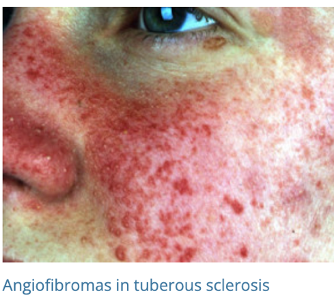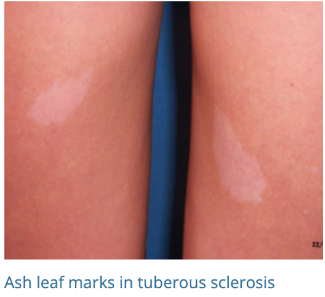Infantile Spasms
- Dr Hector Thomson
- May 11, 2022
- 4 min read
Updated: Apr 8, 2024
Dr Hector Thomson Emergency Registrar
Peer review: Dr Binula Wickramarachchi
Babies do lots of funny movements. As an ACEM trainee working in a paediatric ED one of my greatest joys is learning all the cool baby reflexes from my RACP colleagues - fencing posture is my favourite so far!

THE CASE
In a recent shift as the waiting room doctor, I saw a 7-month-old who had been doing some “funny movements” over the past few weeks. They were happening more frequently and now interrupting feeds. She looked like a happy and well baby in the waiting room. Then the mum pulled up the videos she had taken. The little baby would suddenly throw its arms out and cry every few seconds.
SO, WHAT IS GOING ON?
Infantile spasms. These are a rare, but serious type of seizure, occurring in 1 in 2,000 children. The onset of IS peaks between 4 and 6 months, although these seizures can begin anytime in the first two years.
🤓 SIDE NOTE: HISTORY LESSON 🤓
English physician Dr W. J. West first described infantile spasms in 1840 with a letter to the Lancet outlining what he had observed in his own son.
“The child is now near a year old; was a remarkably fine, healthy child when born, and continued to thrive till he was four months old. It was at this time that I first observed slight bobbing of the head forward, which I then regarded as a trick, but were, in fact, the first indications of disease; for these bobbings increased in frequency, and at length became so frequent and powerful, as to cause a complete heaving of the head forward toward his knees, and then immediately relaxing into the upright position, these bowings and relaxings would be repeated alternately at intervals of a few seconds, and repeated from ten to twenty or more times at each attack, which attack would not continue more than two or three minutes; he sometimes has two, three, or more attacks in the day; they come on whether sitting or lying; just before they come on he is all alive and in motion, making a strange noise, and then all of a sudden down goes his head and upwards his knees; he then appears frightened and screams out; at one time, he lost flesh, looked pale and exhausted, but latterly he has regained his good looks, and, independent of this affection, is a fine grown child.”

WHAT DO THE MOVEMENTS LOOK LIKE?
The seizures include repetitive, but often subtle movements.
Typically sudden flexor or extensor spasms of the head, neck, trunk or extremities
May include head nodding or facial or eye movements
Commonly symmetrical, but may be asymmetric
Often cries before or after
Each event lasts 1-2 seconds, but these can cluster together, occurring every few seconds for periods of several minutes.
Most commonly shortly after waking from sleep

You can watch the YouTube clip of this gif here, or some further examples (including some that are pretty subtle) can be seen in videos here and here.
DIFFERENTIAL DIAGNOSIS
Non-epileptic episodes such as shuddering and benign myoclonus of infancy
Benign myoclonic epilepsy of infancy
Other infantile epilepsies
POSSIBLE CAUSES
Tuberous sclerosis complex -> Look for skin lesions
Trisomy 21 -> Examine for dysmorphic features and ask about perinatal screening
Genetic causes -> Ask about family history of seizures/Development delay
Focal structural abnormalities -> Ask about early handedness
Perinatal hypoxic-ischaemic encephalopathy -> Ask about perinatal complications
Ask about milestones and chart the patient's head circumference.
COMPLICATIONS
Associated with developmental delay in 80% of infants
High rates of ongoing epilepsy
SIDE NOTE: WHAT IS WEST SYNDROME?
Described by our friend, Dr William James West (from your history lesson, above). West Syndrome is a triad (all good eponyms are) of:
Infantile spasm
Hypsarrhythmia on EEG
Developmental arrest/regression
Not all children with infantile spasm will have all features of West Syndrome.
DIAGNOSIS
🚨 Suspicion needs an urgent neurology review - this is a neurological emergency - wake up on-call people for this 🚨
Urgent EEG
Prompt MRI brain
Other investigations for the underlying aetiology (if unknown), including:
Chromosomal microarray
Urine metabolic screen
Consideration of other genetic testing
TREATMENT
This will be guided by the neurologists but first-line is high dose prednisolone
Prompt treatment is required to minimise the adverse developmental impact
Vigrabatrin is first-line in infants with Tuberous Sclerosis Complex
☝️ Practice Point: High dose prednisolone treatment is associated with increased risk of serious and/or opportunistic infections - if these kids present febrile or unwell, manage as sepsis.
CASE CONCLUSION
The baby got an urgent EEG in the ED which showed the classic hypsarrhythmia. They were admitted under the neurology team and high dose steroids commenced. Over the coming weeks the spasms decreased in frequency.
TAKE HOME POINTS:
If a picture is worth a thousand words, then a video is worth a million.
Look for typically sudden, brief, bilateral and symmetric contraction of the muscles of the neck, trunk and extremities, occurring in clusters
Infantile spasm requires an urgent neurology review and EEG
Treatment is high dose steroids
Early recognition and treatment can minimise developmental impact
INFANTILE SPASMS AWARENESS WEEK
Infantile Spasms Awareness Week (ISAW) is held annually on December 1-7. During ISAW 2017, the ISAN introduced the "STOP Infantile Spasms" mnemonic, an easily remembered acronym, to raise awareness about this rare, yet serious seizure disorder.

Source: https://www.epilepsy.com/learn/types-epilepsy-syndromes/infantile-spasms-west-syndrome#West-Story
USEFUL RESOURCES
RCH CPG: https://www.rch.org.au/clinicalguide/guideline_index/Infantile_Spasms/
Epilepsy Foundation: https://www.epilepsy.com/article/2020/11/infantile-spasms-awareness-week
Dermnet: Tubular sclerosis: https://dermnetnz.org/topics/tuberous-sclerosis
OTHER FOAMED CONTENT
REFERENCES
Hancock EC, Osborne JP, Edwards SW. Treatment of infantile spasms. Cochrane Database of Systematic Reviews 2013, Issue 6. Art. No.: CD001770. doi: 10.1002/14651858.cd001770.pub3
Wilmhurs JM, Ibekwe RC, O’Callaghan FJK, Epileptic spasms – 175 years on: Trying to teach an old dog new tricks. Seizure 44(2017) 81-86. doi: 10.1016/j.seizure.2016.11.021
West WJ. On a peculiar form of infantile convulsions. Lancet. 1841;1:724–725 doi: 10.1016/S0140-6736(00)40184-4 (that's right, a doi for an 1841 article)

HECTOR THOMSON
Emergency Registrar
Hector (the one on the left) is an Emergency Medicine Advanced Trainee at The Alfred. He’s still clinging to the basic science knowledge he gained during primary exam prep and enjoys shoulder dislocations, trauma, rugby union, fresh pasta and good gin. He doesn’t like vague allergies or cats.








Comments